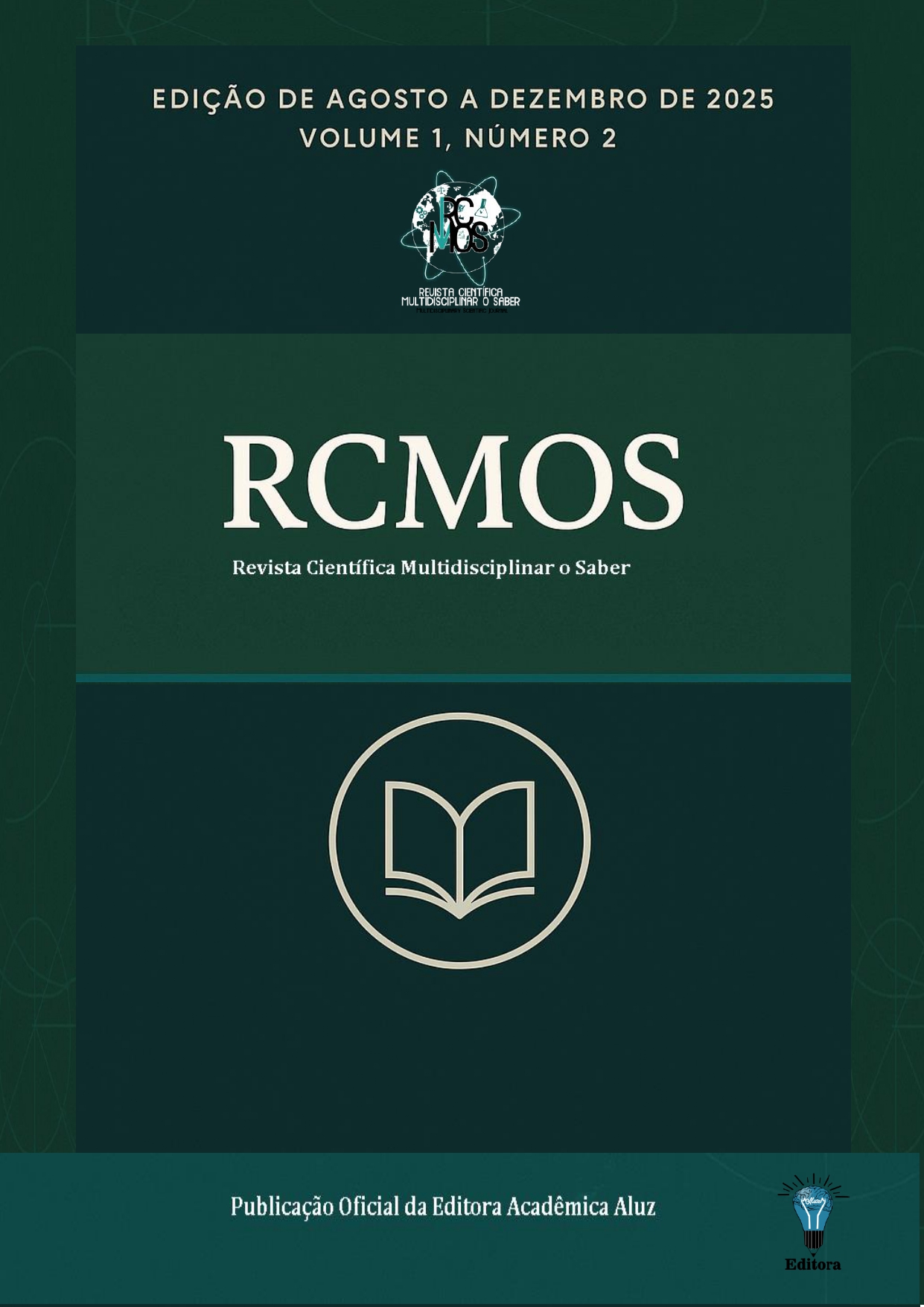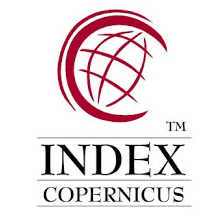Análise comparativa dos aspectos biomecânicos dos pinos de fibra de vidro e fibra de polietileno (RIBBOND) - revisão de literatura
Comparative analysis of the biomechanical aspects of glass fiber and polyethylene fiber (RIBBOND) posts – literature review
DOI:
https://doi.org/10.51473/rcmos.v1i2.2025.1545Palavras-chave:
inos de fibra de vidro. Fibras de polietileno (Ribbond). Reabilitação dentária.Resumo
A dentística restauradora busca recuperar dentes tratados endodonticamente com grande perda estrutural, garantindo função, estética e resistência. Dentes submetidos a tratamento endodôntico tornam-se mais frágeis, exigindo materiais que reforcem sua integridade. Entre as alternativas destacam-se os pinos de fibra de vidro e as fibras de polietileno (Ribbond), que apresentam boas propriedades biomecânicas e estéticas. Este estudo teve como objetivo analisar, por meio de revisão integrativa da literatura, as recomendações e estratégias terapêuticas relacionadas ao uso desses materiais em dentes comprometidos. A metodologia baseou-se em busca nas bases PubMed, SciELO, LILACS e Google Acadêmico (2015–2025), utilizando descritores como “Pinos de Fibra de Vidro”, “Fibra de Polietileno” e “Materiais Biomiméticos”. Os resultados mostraram que os pinos de fibra de vidro possuem módulo de elasticidade semelhante ao da dentina, boa adesão e estética favorável, sendo indicados para dentes com grande perda coronária. Já as fibras de polietileno destacam-se pela flexibilidade, translucidez e capacidade de distribuir as forças mastigatórias, favorecendo fraturas reparáveis e preservando o remanescente dentário. Técnicas como “Wallpapering” e “Rollover” aumentam sua eficácia clínica. A escolha entre os dois materiais depende do remanescente dentário e do tipo de carga funcional. Conclui-se que ambos representam alternativas seguras e eficazes na reabilitação de dentes fragilizados, permitindo uma abordagem conservadora, funcional e biomimética na odontologia restauradora contemporânea.
Downloads
Referências
AGGARWAL, M. D. S.; XÁ, Arpit; KAPOOR, Sonali. Efeito da orientação e colocação das fibras na resistência à fratura de grandes cavidades mesio-ocluso-distais de classe II em pré-molares superiores: um estudo in vitro. Revista de Odontologia Conservadora, v. 25, n. 2, p. 122-127, mar./abr. 2022.
ALIRAJPURWALA, Tasneem; ZHABUAWALA, Murtuza; NADIG, Roopa R. Corono-radicular reinforcement with minimal invasion: a novel case report. Journal of Conservative Dentistry: JCD, v. 25, n. 1, p. 101, 2022. DOI: https://doi.org/10.4103/jcd.jcd_463_21
BARFEIE, A.; THOMAS, M. B.; WATTS, A.; REES, J. Failure mechanisms of fibre posts: a literature review. European Journal of Prosthodontics and Restorative Dentistry, v. 23, n. 3, p. 115-127, 2015.
BHUVA, B.; GIOVARRUSCIO, M.; RAHIM, N.; BITTER, K.; MANNOCCI, F. The restoration of root filled teeth: a review of the clinical literature. International Endodontic Journal, v. 54, n. 4, p. 509–535, 2021. DOI: 10.1111/iej.13438. DOI: https://doi.org/10.1111/iej.13438
BRAGA, M. R.; MESSIAS, D. C.; MACEDO, L. M.; SILVA-SOUSA, Y. C.; GABRIEL, A. E. Evaluation of fracture resistance of restored and endodontically treated teeth with different intraradicular retainers. Research, Society and Development, v. 12, n. 4, p. e0112441336, 2023.
CRUZ, J. H. A. et al. Reabilitações sob uso de pinos de fibra de vidro: relato de casos. Journal of Medicine and Health Promotion, Patos, v. 5, n. 3, p. 57-65, jul./set. 2020.
DELIPERI, S.; ALLEMAN, D.; RUDO, D. Stress-reduced direct composites for the restoration of structurally compromised teeth: fiber design according to the “wallpapering” technique. Operative Dentistry, v. 42, n. 3, p. 233–243, 2017. DOI: https://doi.org/10.2341/15-289-T
FELIPPE, L. A. et al. Fibras de reforço para uso odontológico – fundamentos e aplicações clínicas. Revista da APCD, v. 55, n. 4, jul./ago. 2021.
FURTOS, G.; BALDEA, B.; SILAGHI–DUMITRESCU, L. Development of new radiopaque glass fiber posts. Materials Science & Engineering C: Materials for Biological Applications, v. 59, p. 855-862, 2016. DOI: https://doi.org/10.1016/j.msec.2015.10.091
GARLAPATI, T. G.; KRITHIKADATTA, J.; NATANASABAPATHY, V. Fracture resistance of endodontically treated teeth restored with short fiber composite used as a core material – an in vitro study. Journal of Prosthodontic Research, v. 61, n. 4, p. 464–470, 2017. DOI: https://doi.org/10.1016/j.jpor.2017.02.001
JUREMA, A. L. B.; FILGUEIRAS, A. T.; SANTOS, K. A.; BRESCIANI, E.; CANEPPELE, T. M. F. Effect of intraradicular fiber post on the fracture resistance of endodontically treated and restored anterior teeth: a systematic review and meta-analysis. Journal of Prosthetic Dentistry, v. 128, n. 1, p. 13-24, jul. 2022. DOI: https://doi.org/10.1016/j.prosdent.2020.12.013
KAUR, B. et al. Comparative evaluation of fracture resistance of endodontically treated teeth restored with different core build-up materials: an in vitro study. International Journal of Clinical Pediatric Dentistry, v. 14, n. 1, p. 51–58, 2021. DOI: https://doi.org/10.5005/jp-journals-10005-1901
LAZARI, P. C. et al. Survival of extensively damaged endodontically treated incisors restored with different types of posts-and-core foundation restoration material. Journal of Prosthetic Dentistry, v. 119, p. 769-776, maio 2018. DOI: 10.1016/j.prosdent.2017.05.012. DOI: https://doi.org/10.1016/j.prosdent.2017.05.012
LEMOS, C. A. A. et al. Influence of diameter and intraradicular post in the stress distribution: finite elements analysis. Revista de Odontologia da UNESP, v. 45, n. 3, p. 171-176, 2016. DOI: https://doi.org/10.1590/1807-2577.21215
LI, M. H. M.; BERNABÉ, E. Tooth wear and quality of life among adults in the United Kingdom. Journal of Dentistry, v. 55, p. 48-53, dez. 2016. DOI: 10.1016/j.jdent.2016.09.013. DOI: https://doi.org/10.1016/j.jdent.2016.09.013
MAGNE, P. et al. Composite resin core buildups with and without post for the restoration of endodontically treated molars without ferrule. Operative Dentistry, v. 41, n. 1, p. 64-75, 2016. DOI: https://doi.org/10.2341/14-258-L
MARCHIONATTI, A. M. E. et al. Influence of elastic modulus of intraradicular posts on the fracture load of roots restored with full crowns. Revista de Odontologia da UNESP, v. 46, n. 4, p. 232–237, 2017. DOI: https://doi.org/10.1590/1807-2577.01617
NACARATO, P. Odontologia biomimética. 2021.
NOVAIS, V. R. et al. Correlation between the mechanical properties and structural characteristics of different fiber posts systems. Brazilian Dental Journal, 2016. DOI: https://doi.org/10.1590/0103-6440201600377
OLIVEIRA, V. S. de et al. O uso da fita da fibra de polietileno (RIBBOND) na odontologia estética e reabilitadora contemporânea: revisão de literatura. In: Ciência, cuidado e saúde: contextualizando saberes. São Paulo: Editora Científica Digital, 2024. DOI: https://doi.org/10.37885/240215654
PALMA, A. et al. Abordagens biomiméticas para dentes tratados endodonticamente: revisão de literatura. Brazilian Journal of Development, Curitiba, v. 7, n. 10, out. 2021. DOI: https://doi.org/10.34117/bjdv7n10-372
PARYANI, M. et al. Reabilitação biomimética de dente extensamente comprometido. Revista Foco, 2023.
RAMÍREZ-SEBASTIÀ, A. et al. Adhesive restoration of anterior endodontically treated teeth: influence of post length on fracture strength. Clinical Oral Investigations, v. 18, n. 2, p. 545-554, mar. 2015. DOI: https://doi.org/10.1007/s00784-013-0978-3
REIS, A.; LOGUERCIO, A. D. Materiais dentários restauradores diretos: dos fundamentos à aplicação clínica. 2. ed. Rio de Janeiro: Guanabara Koogan, 2021.
RUDO, D. N.; KARBHARI, M. E. Physical behaviors of fiber reinforcement as applied to tooth stabilization. Dental Clinics of North America, v. 43, n. 1, p. 7-35, jan. 2015. DOI: https://doi.org/10.1016/S0011-8532(22)00504-3
SANTOS, A. M.; ALVES, L. A.; SANTOS, L. G. G. Análise dos fatores que afetam a fratura de pinos de fibra de vidro em restaurações dentárias: breve revisão de literatura. Revista FT, v. 28, ed. 139, out. 2024.
SCOTTI, N. et al. 3D interfacial gap and fracture resistance of endodontically treated premolars restored with fiber-reinforced composites. The Journal of Adhesive Dentistry, v. 22, n. 2, p. 215–224, 2020.
SILVA, M. A. L. et al. Reabilitação estética e funcional com pino de fibra de vidro. Brazilian Journal of Health Review, Curitiba, v. 3, n. 6, p. 17259-17267, 2020. DOI: https://doi.org/10.34119/bjhrv3n6-147
VARTAK, M. A. et al. Fracture resistance and failure modes of endodontically-treated permanent teeth restored with Ribbond posts vs other post systems: a systematic review and meta-analysis of in vitro studies. Restorative Dentistry & Endodontics, 2025. DOI: https://doi.org/10.5395/rde.2025.50.e5
WANG, H. W.; CHANG, Y. H.; LIN, C. L. Mechanical resistance evaluation of a novel anatomical short glass fiber reinforced post in artificial endodontically treated premolar under rotational/lateral fracture fatigue testing. Dental Materials Journal, 2016. DOI: https://doi.org/10.4012/dmj.2015-199
ZAFAR, M. S. et al. Biomimetic aspects of restorative dentistry biomaterials. Biomimetics, v. 5, n. 3, p. 34, 2020. DOI: https://doi.org/10.3390/biomimetics5030034
ZOTTI, F. et al. Increasing the fracture strength of MOD restorations with Ribbond fibers. Journal of Clinical and Experimental Dentistry, 2024. DOI: https://doi.org/10.4317/jced.61608
Downloads
Publicado
Edição
Seção
Categorias
Licença
Copyright (c) 2025 Ana Kamily da Cunha Silva, Tânia Regina Carvalho de Sá, Livia Duarte Santos Lopes de Carvalho, Lilian Gomes Soares Pires, Marconi Raphael de Siqueira Rego, Matheus Araújo Brito Santos Lopes (Autor)

Este trabalho está licenciado sob uma licença Creative Commons Attribution 4.0 International License.
Este trabalho está licenciado sob a Licença Creative Commons Atribuição 4.0 Internacional (CC BY 4.0). Isso significa que você tem a liberdade de:
- Compartilhar — copiar e redistribuir o material em qualquer meio ou formato.
- Adaptar — remixar, transformar e construir sobre o material para qualquer propósito, inclusive comercial.
O uso deste material está condicionado à atribuição apropriada ao(s) autor(es) original(is), fornecendo um link para a licença, e indicando se foram feitas alterações. A licença não exige permissão do autor ou da editora, desde que seguidas estas condições.
A logomarca da licença Creative Commons é exibida de maneira permanente no rodapé da revista.
Os direitos autorais do manuscrito podem ser retidos pelos autores sem restrições e solicitados a qualquer momento, mesmo após a publicação na revista.













